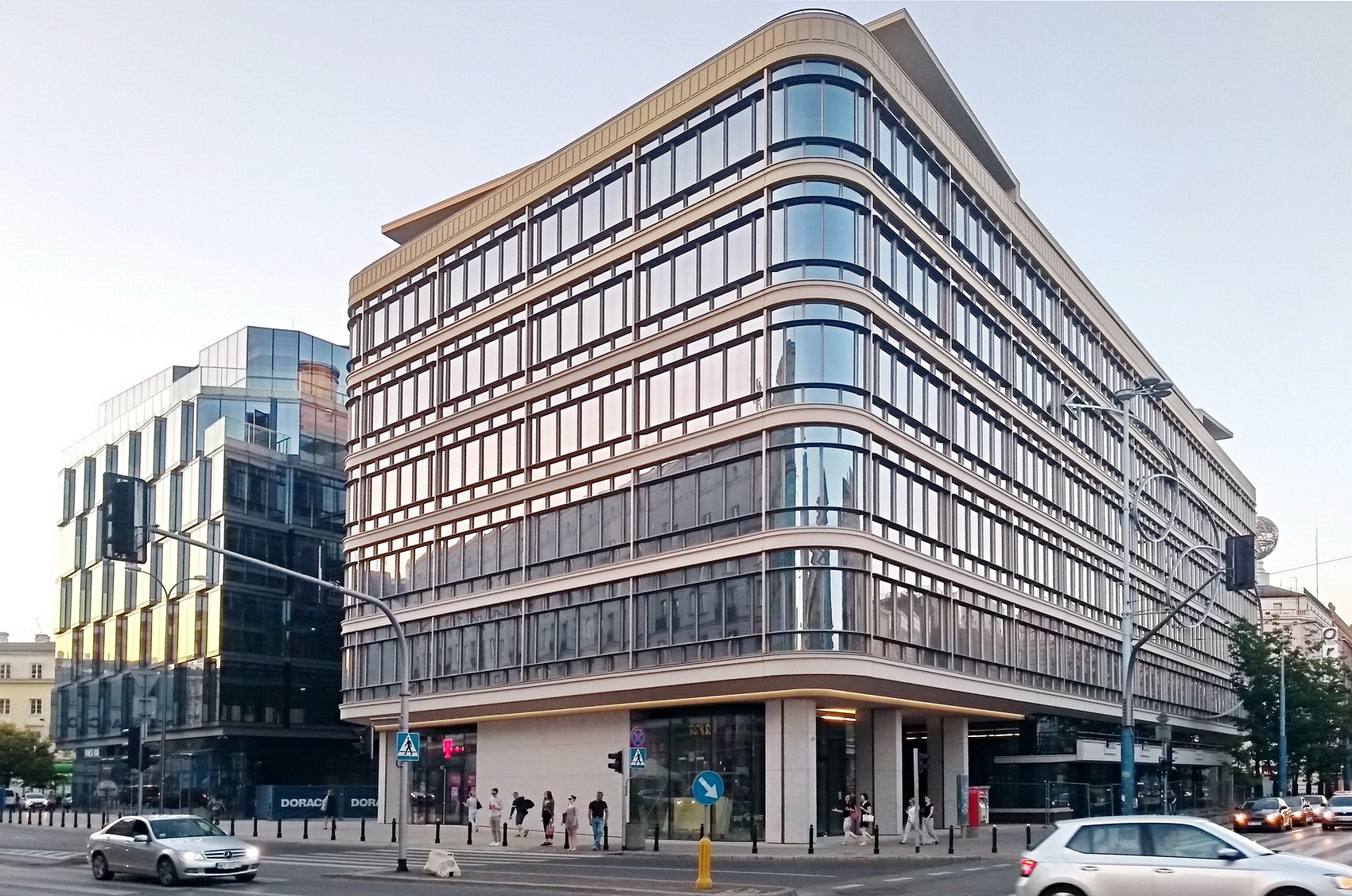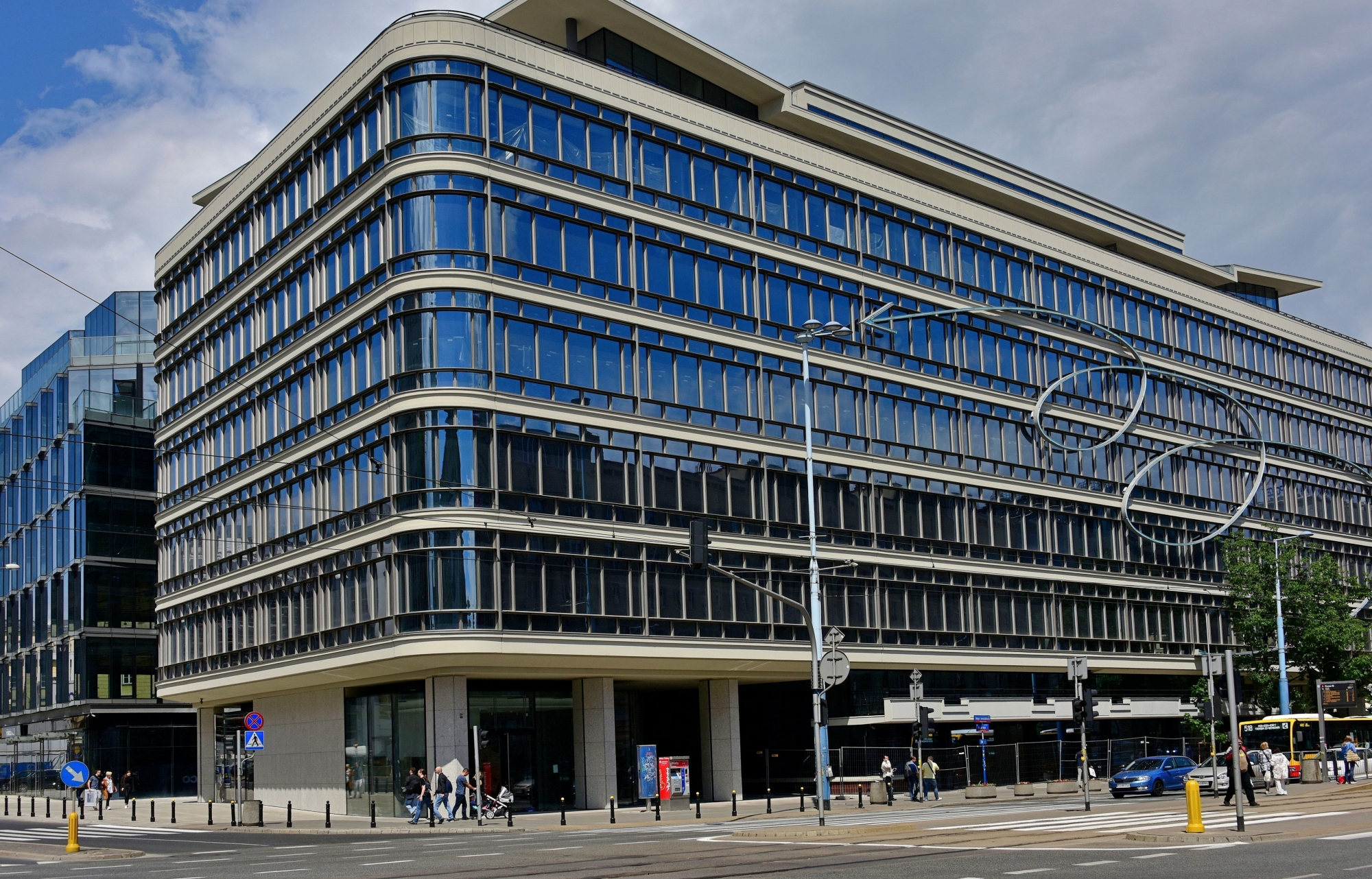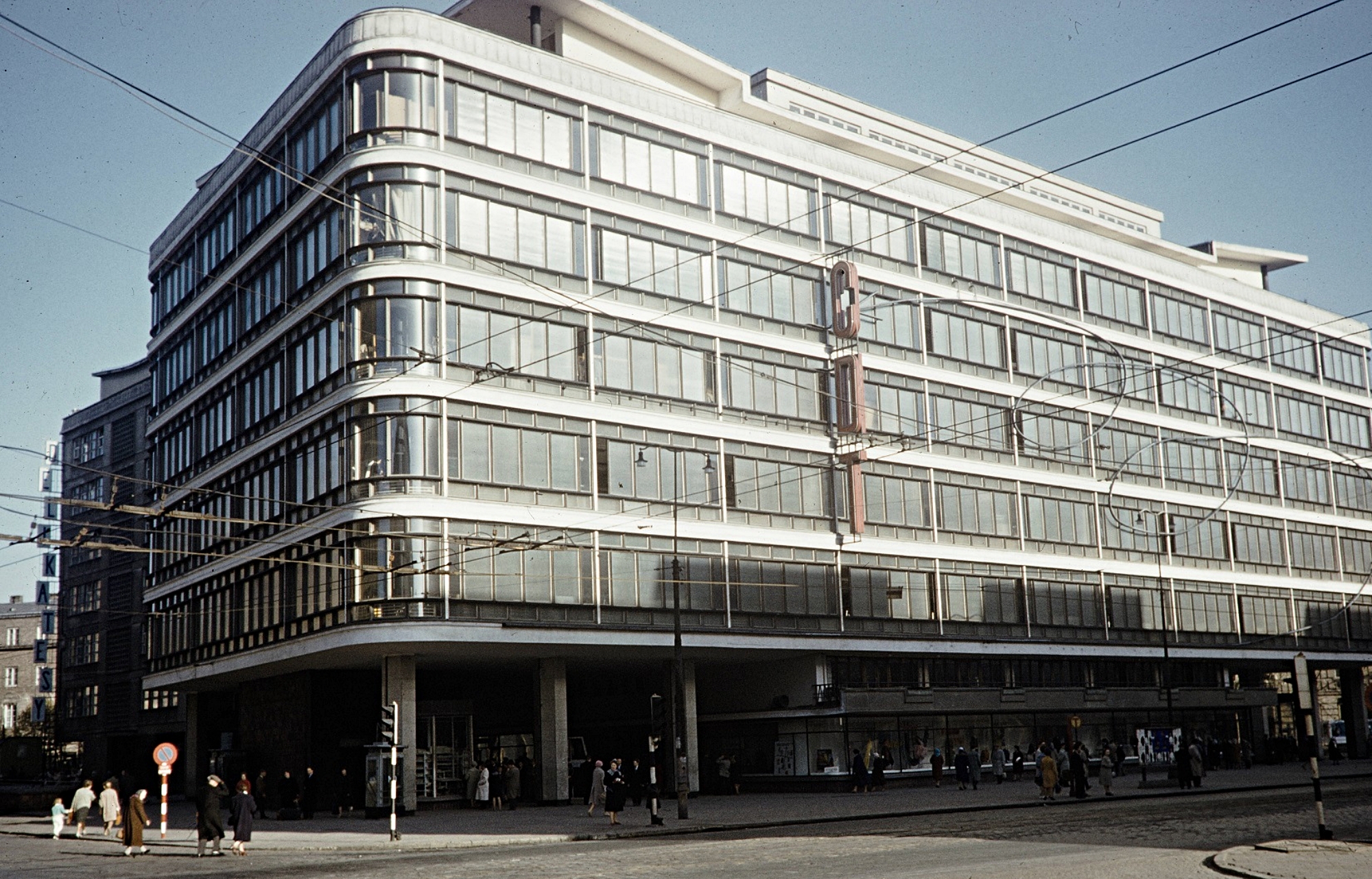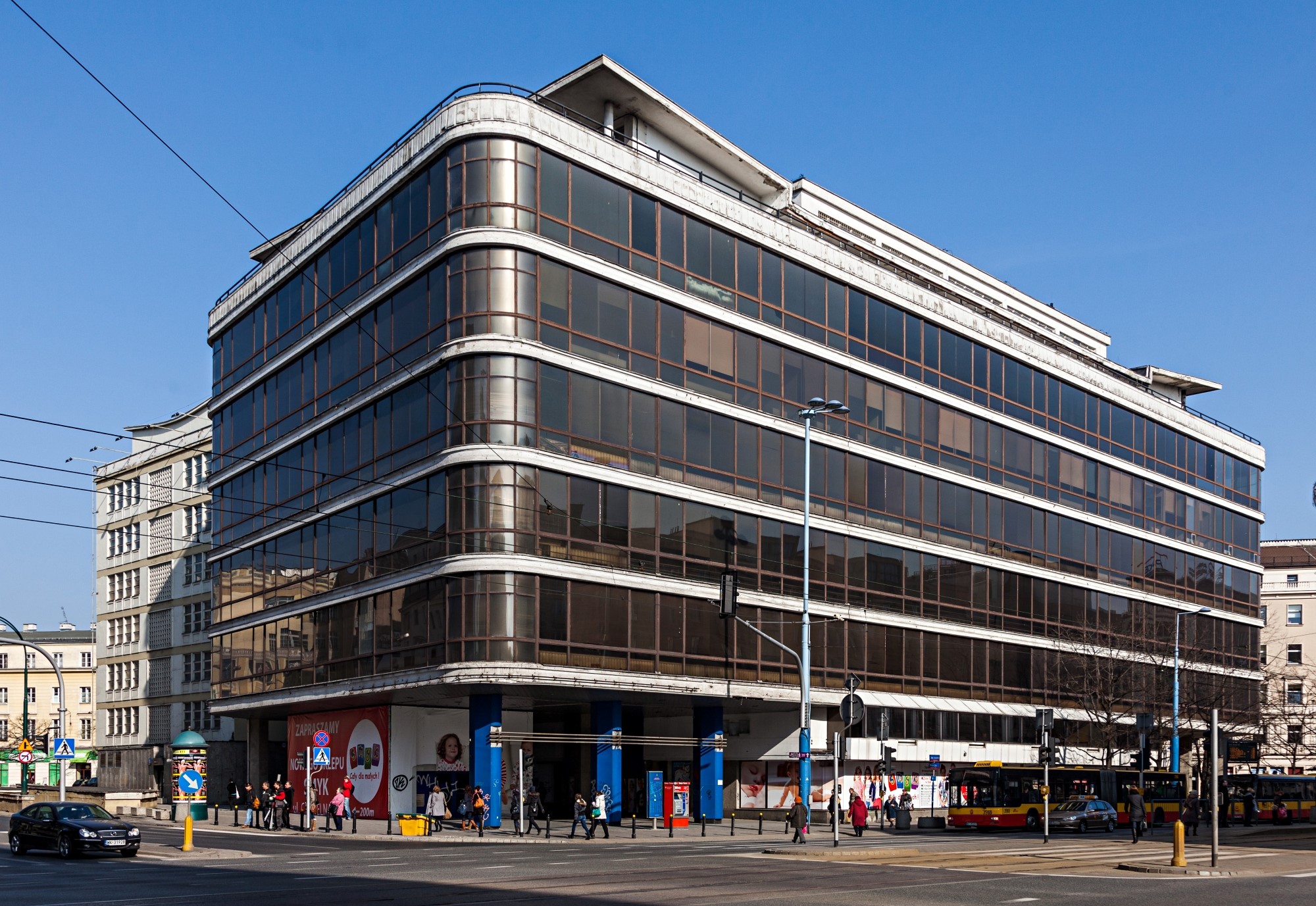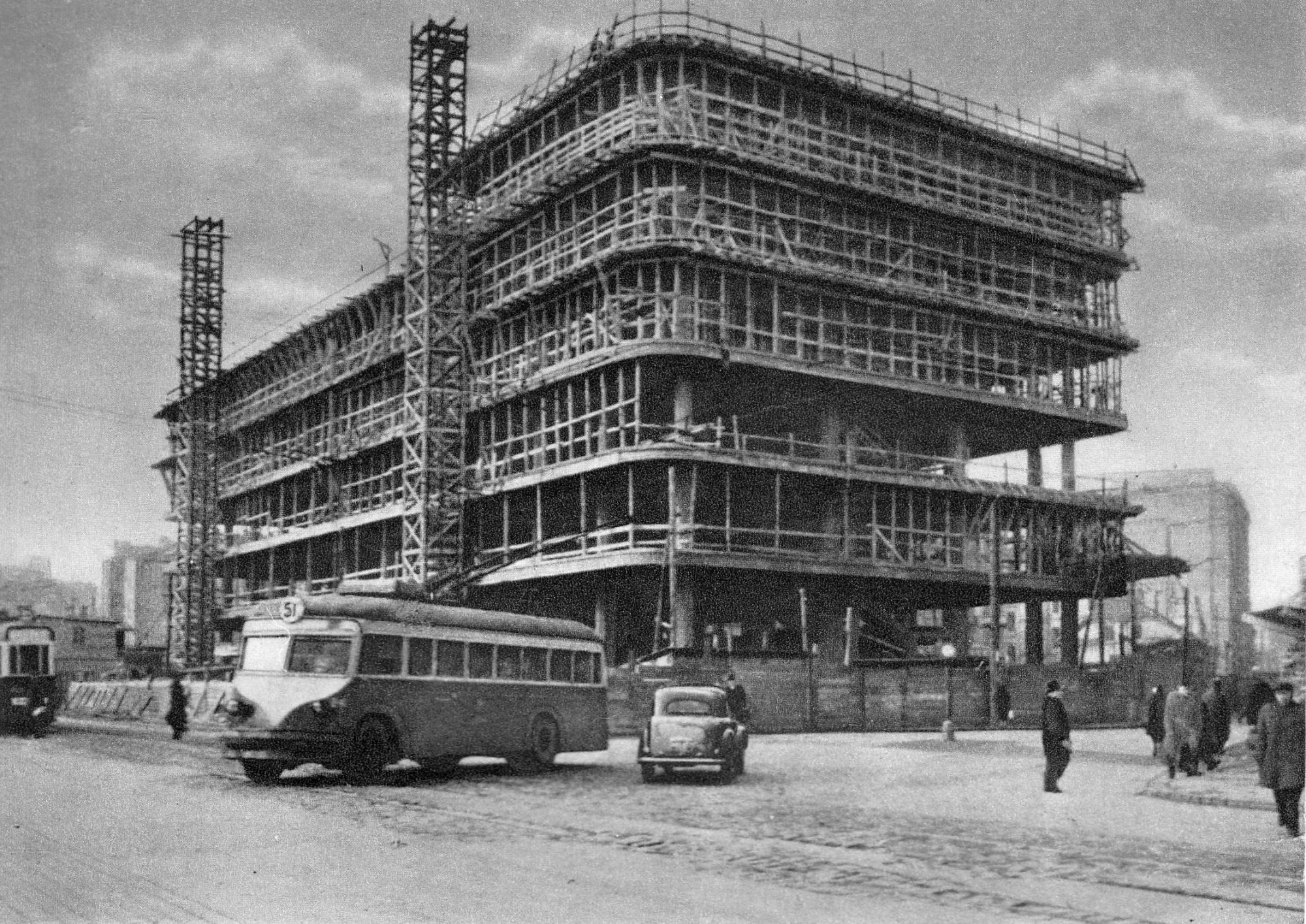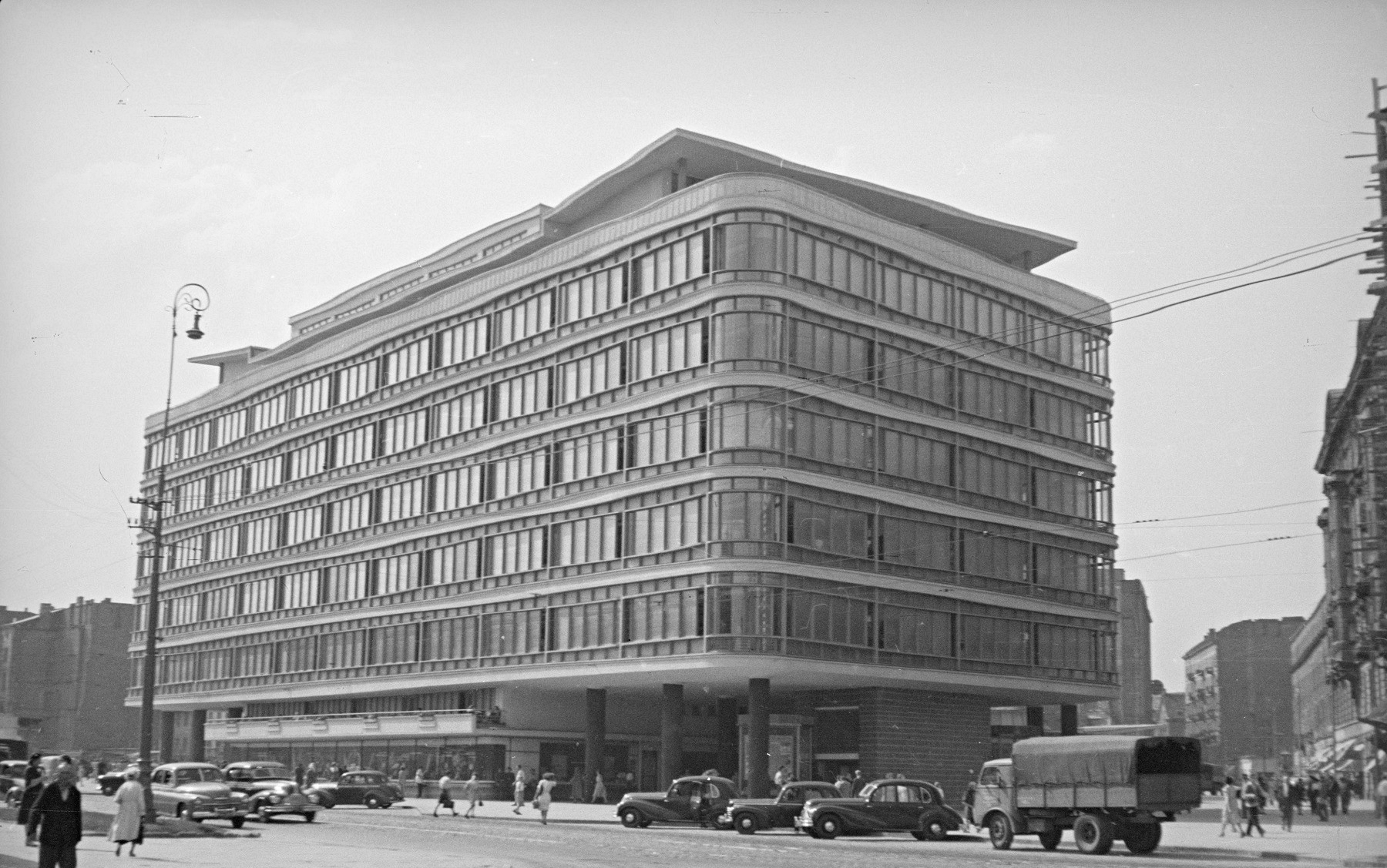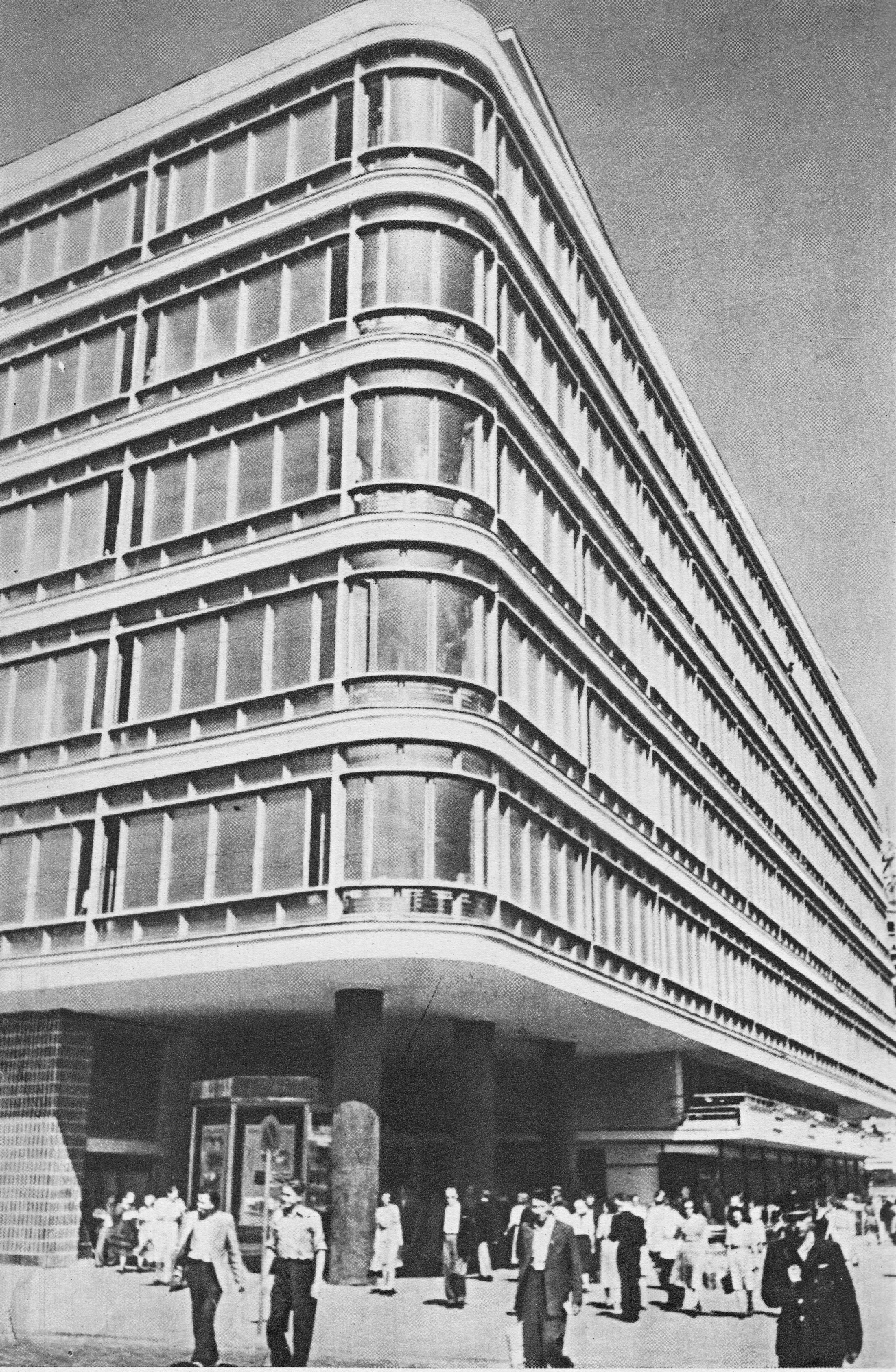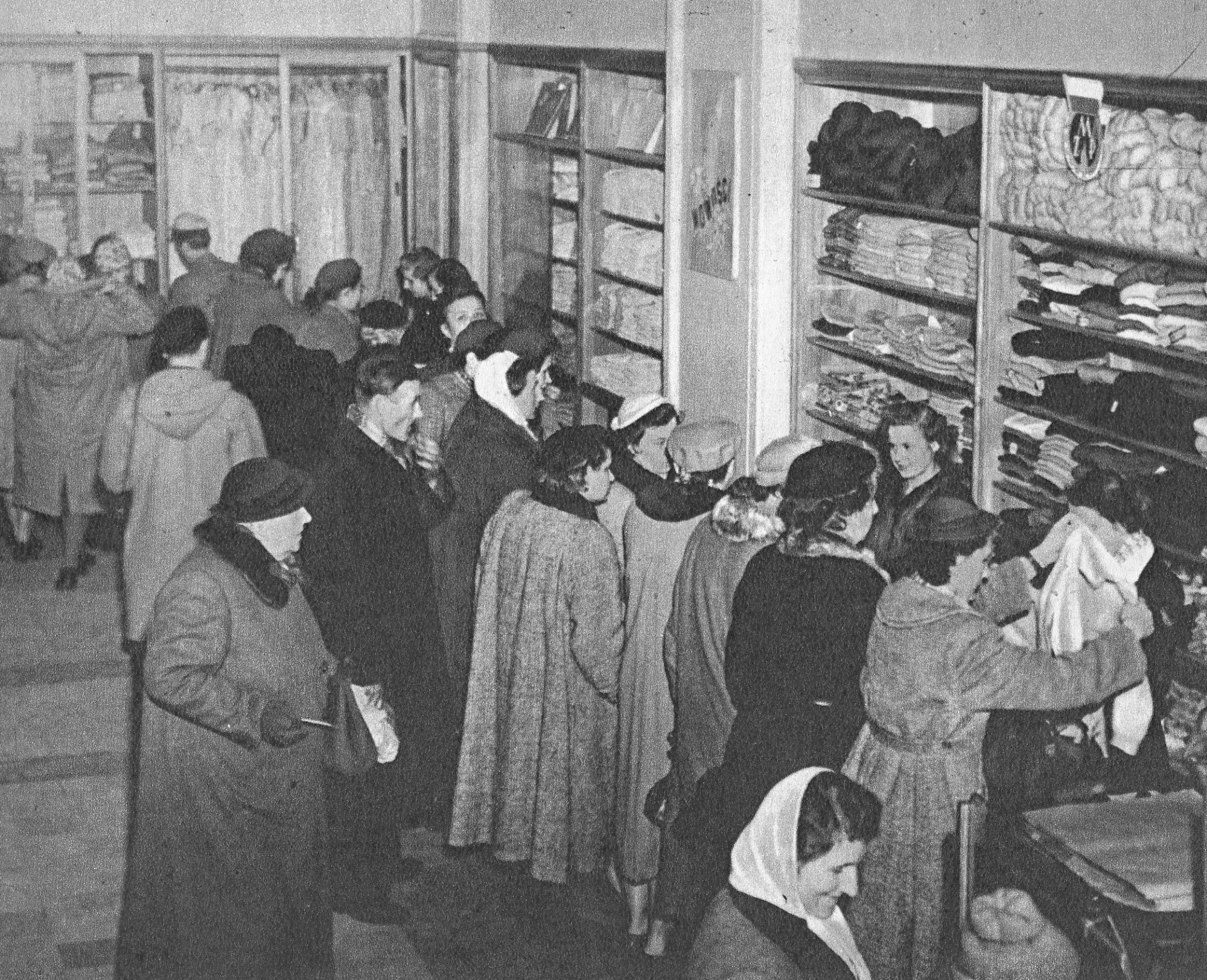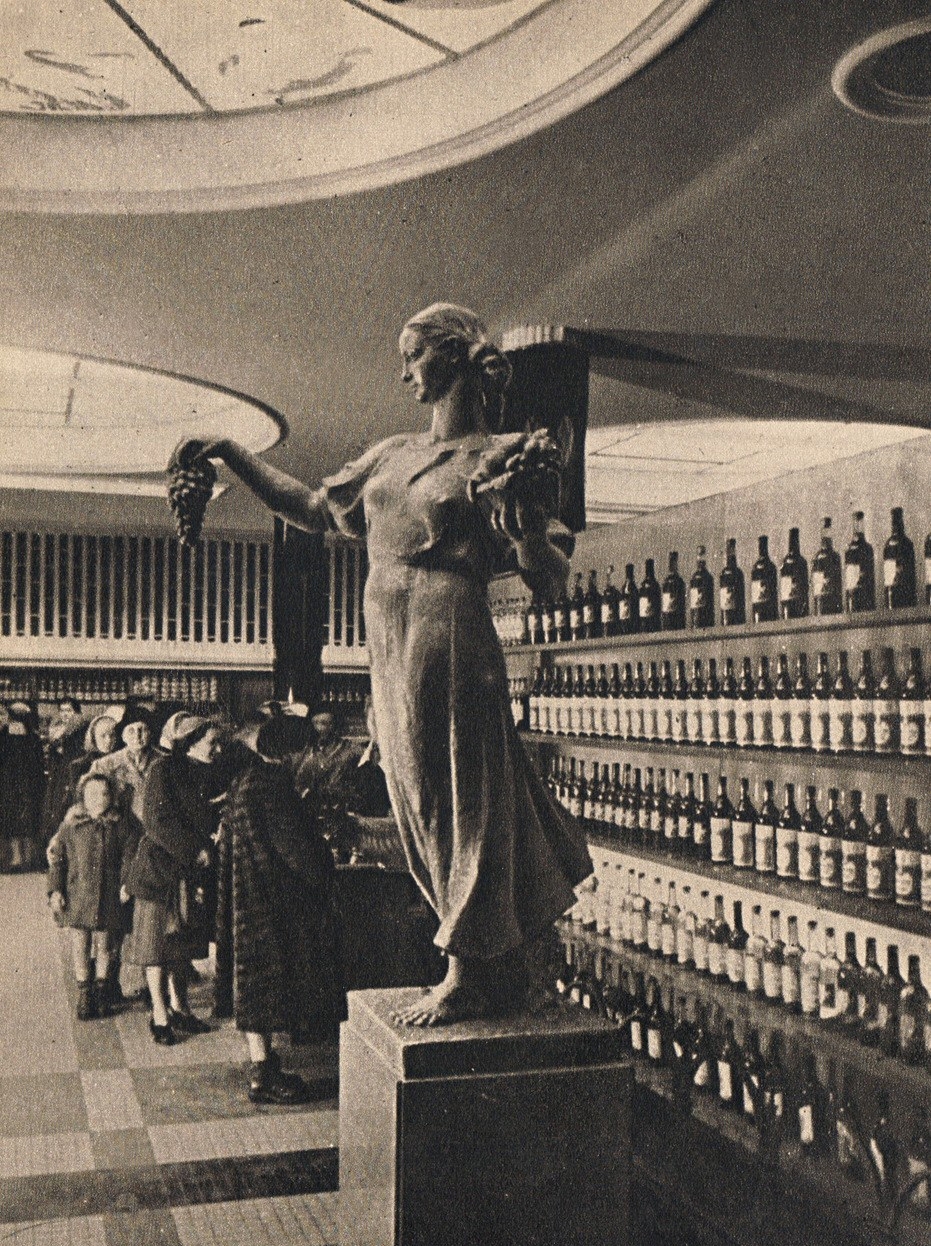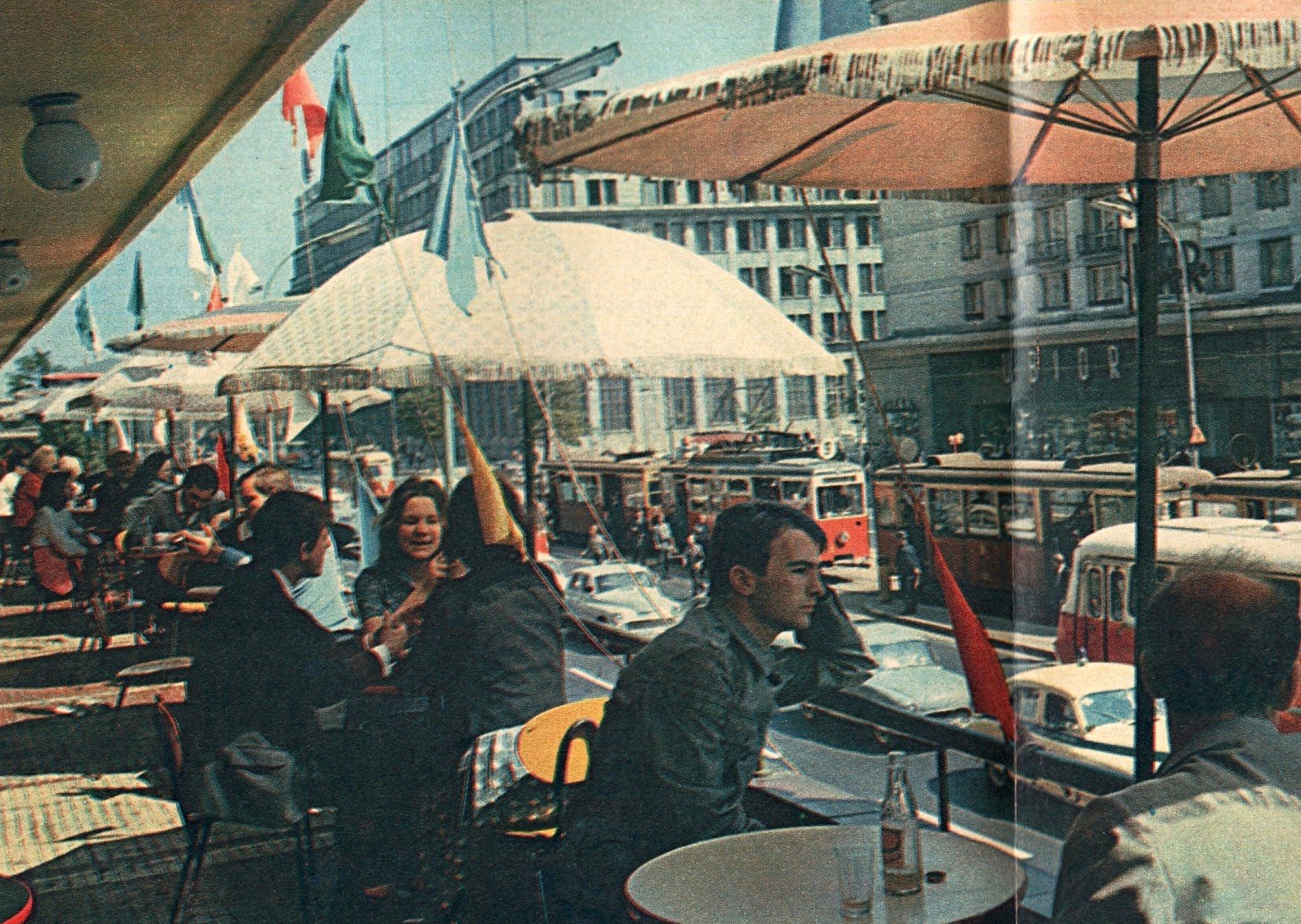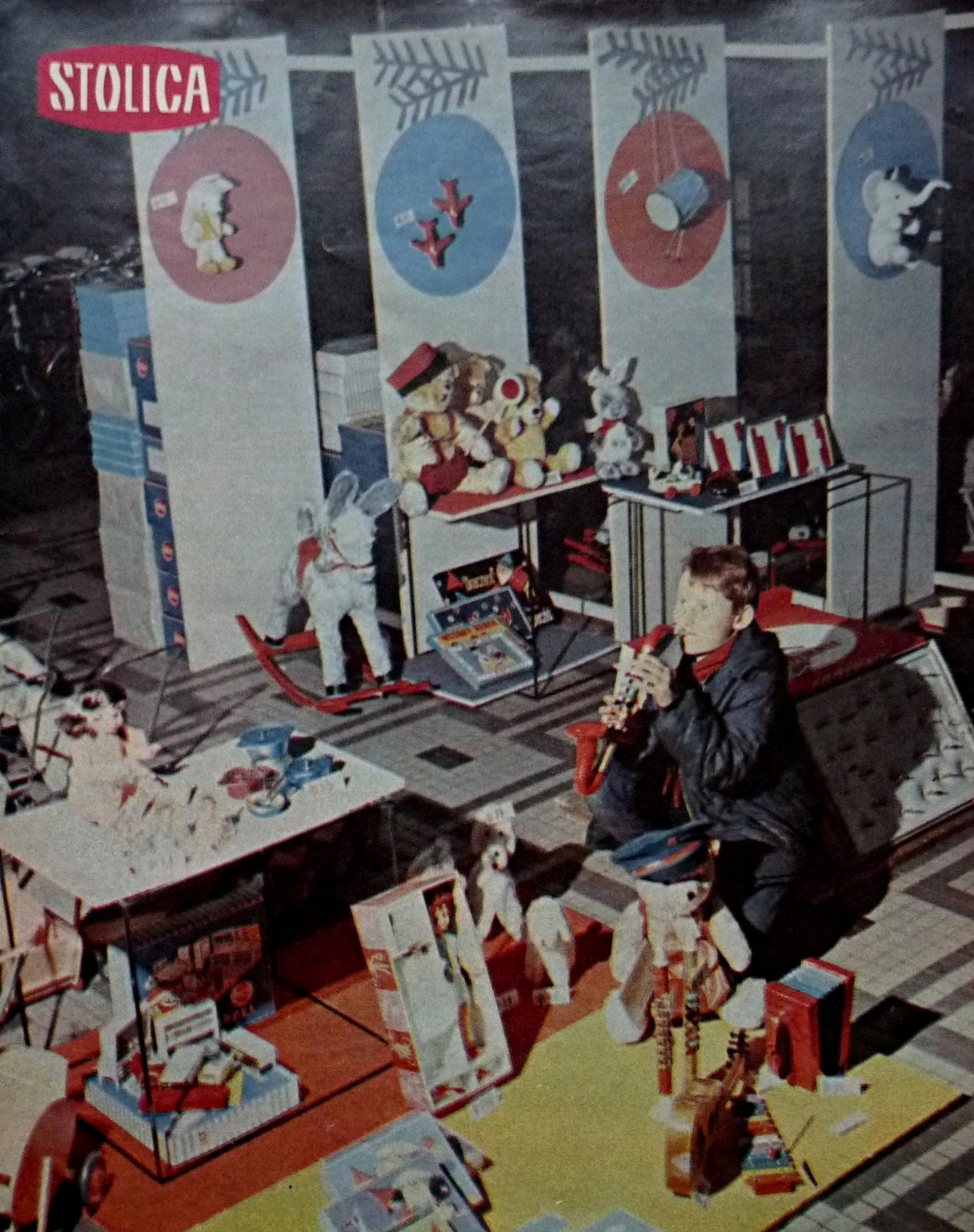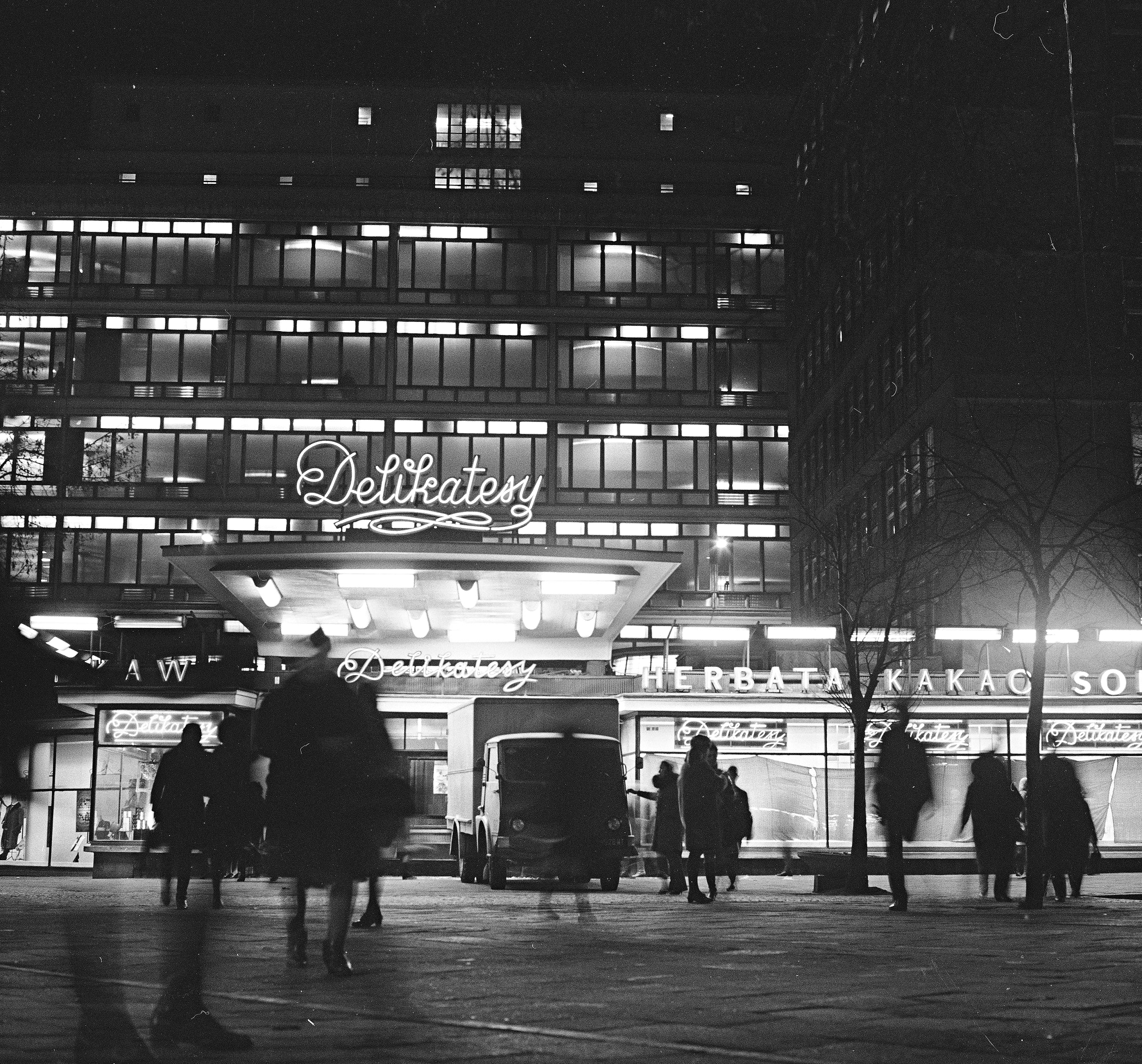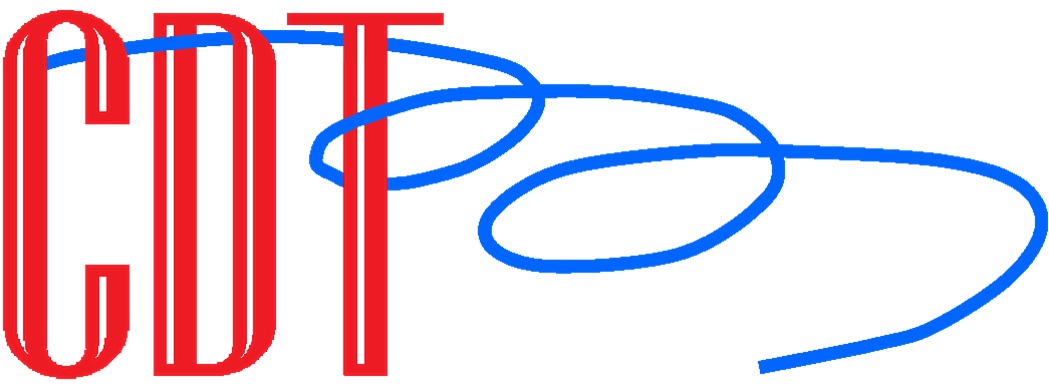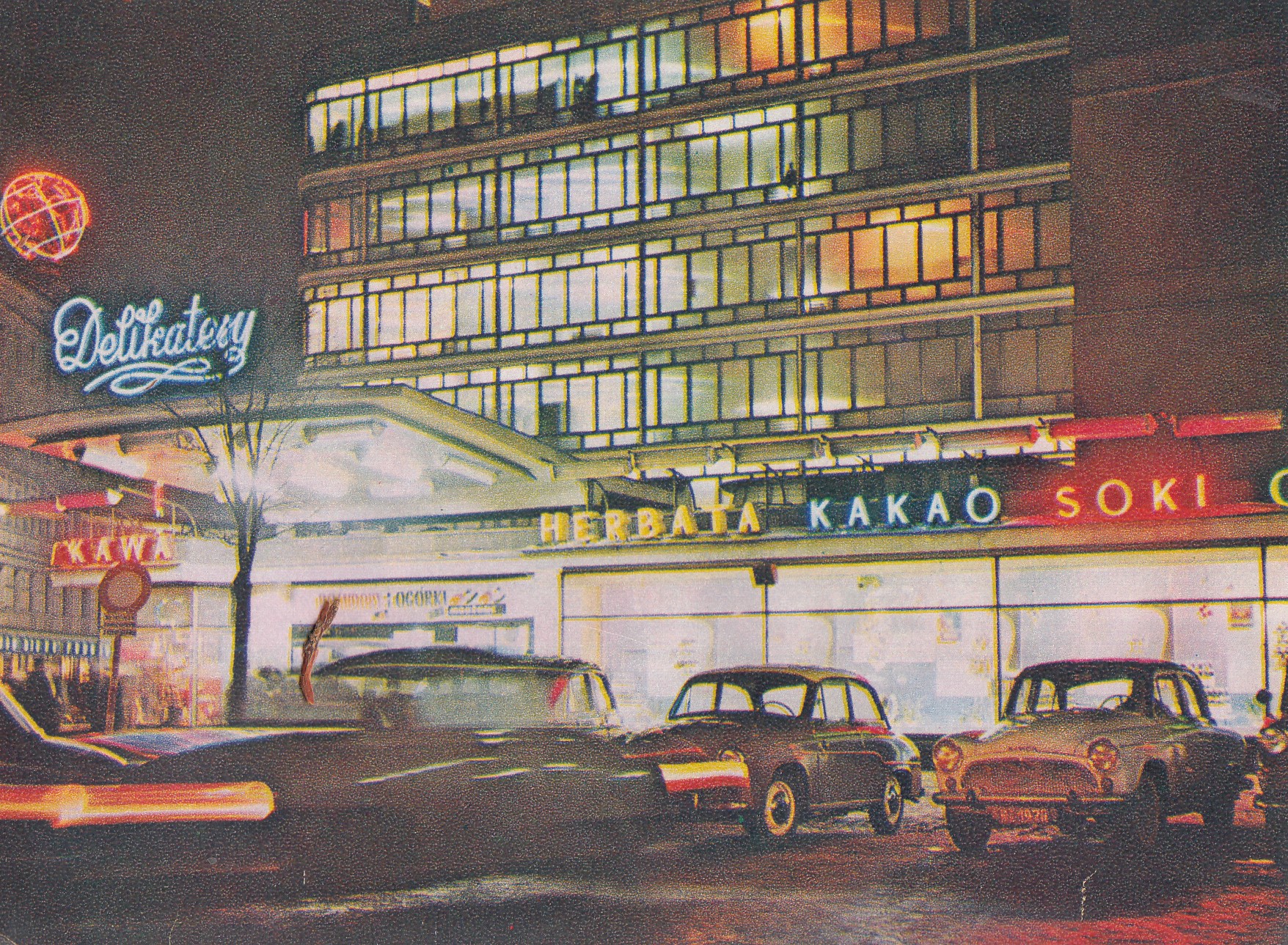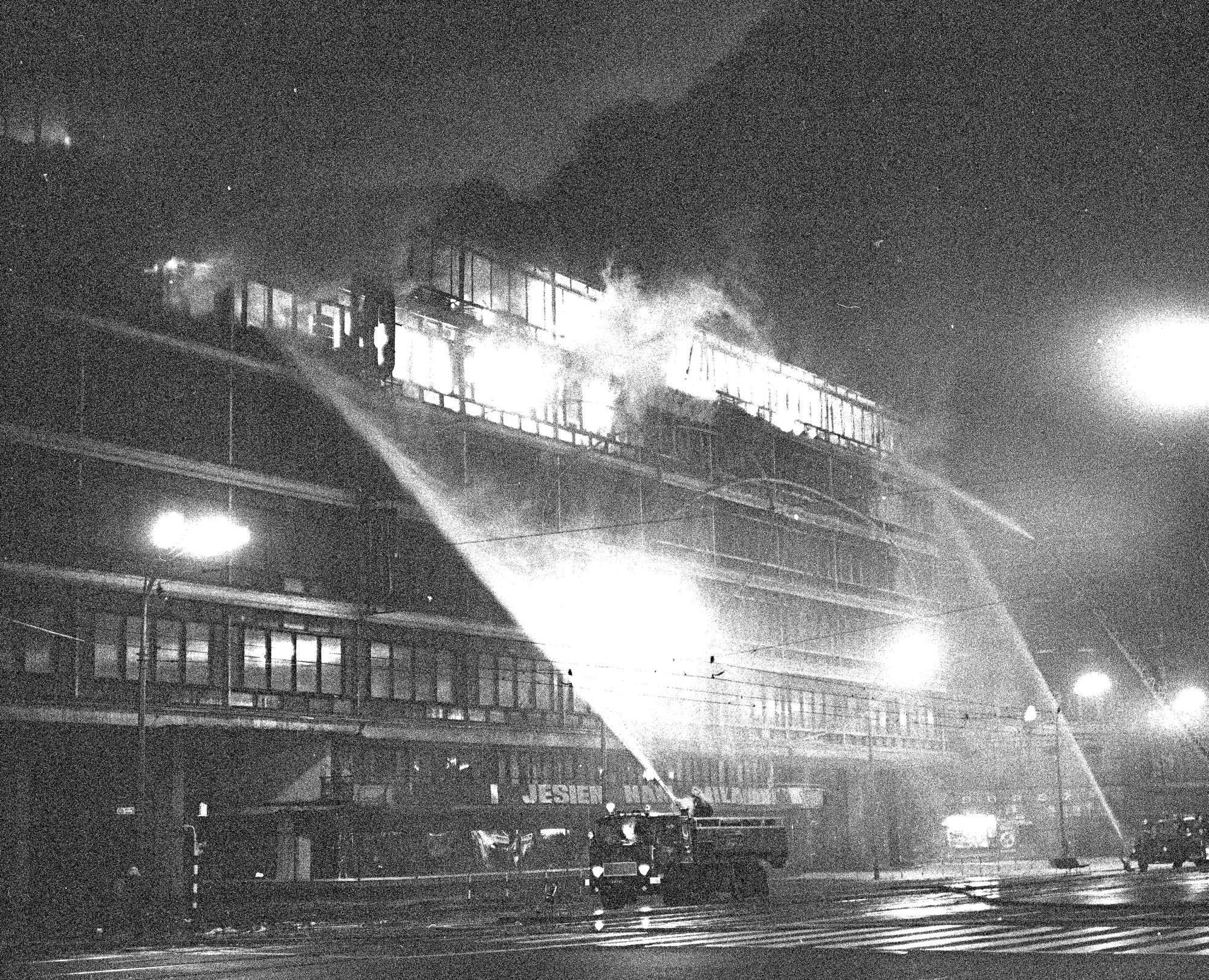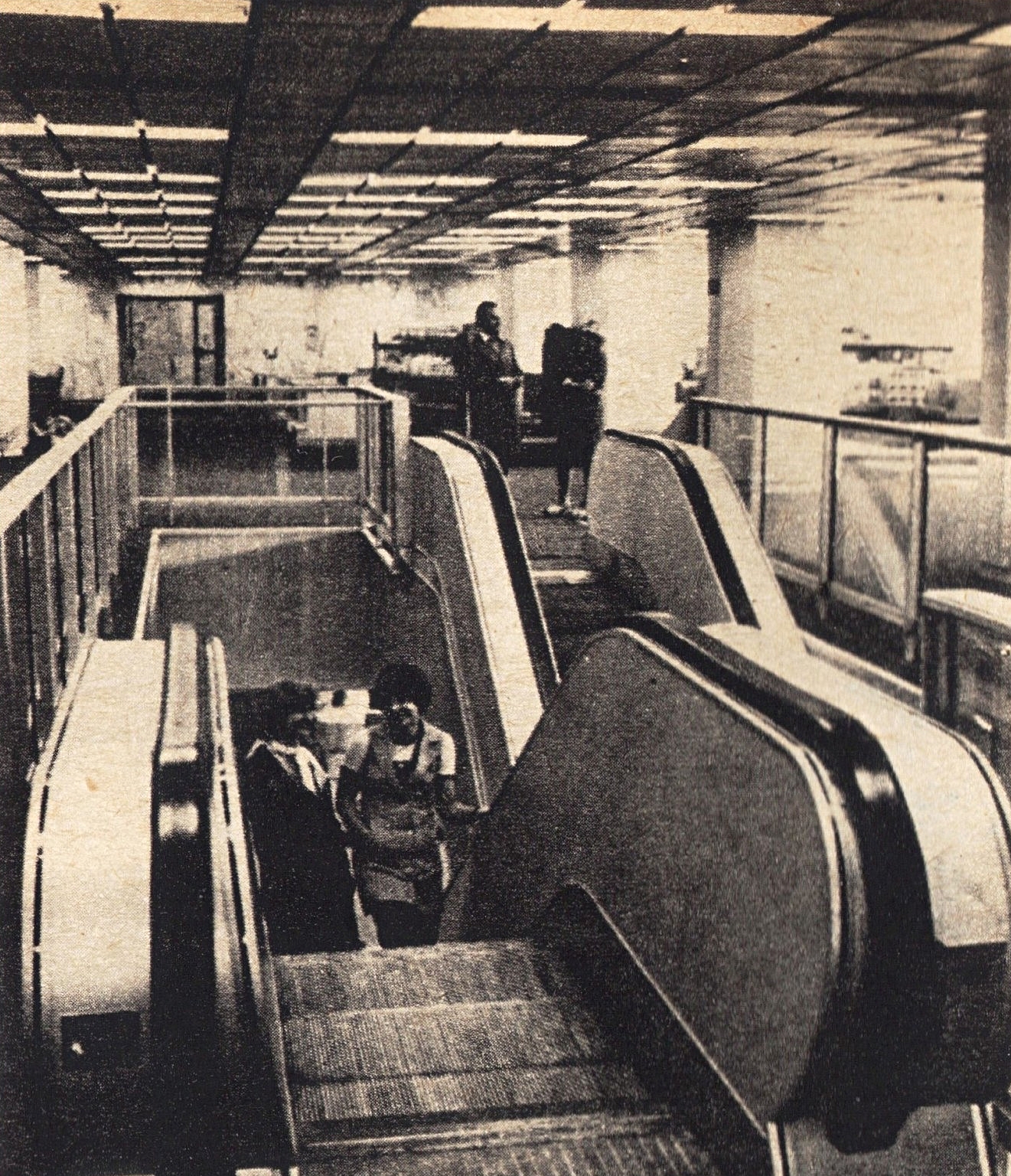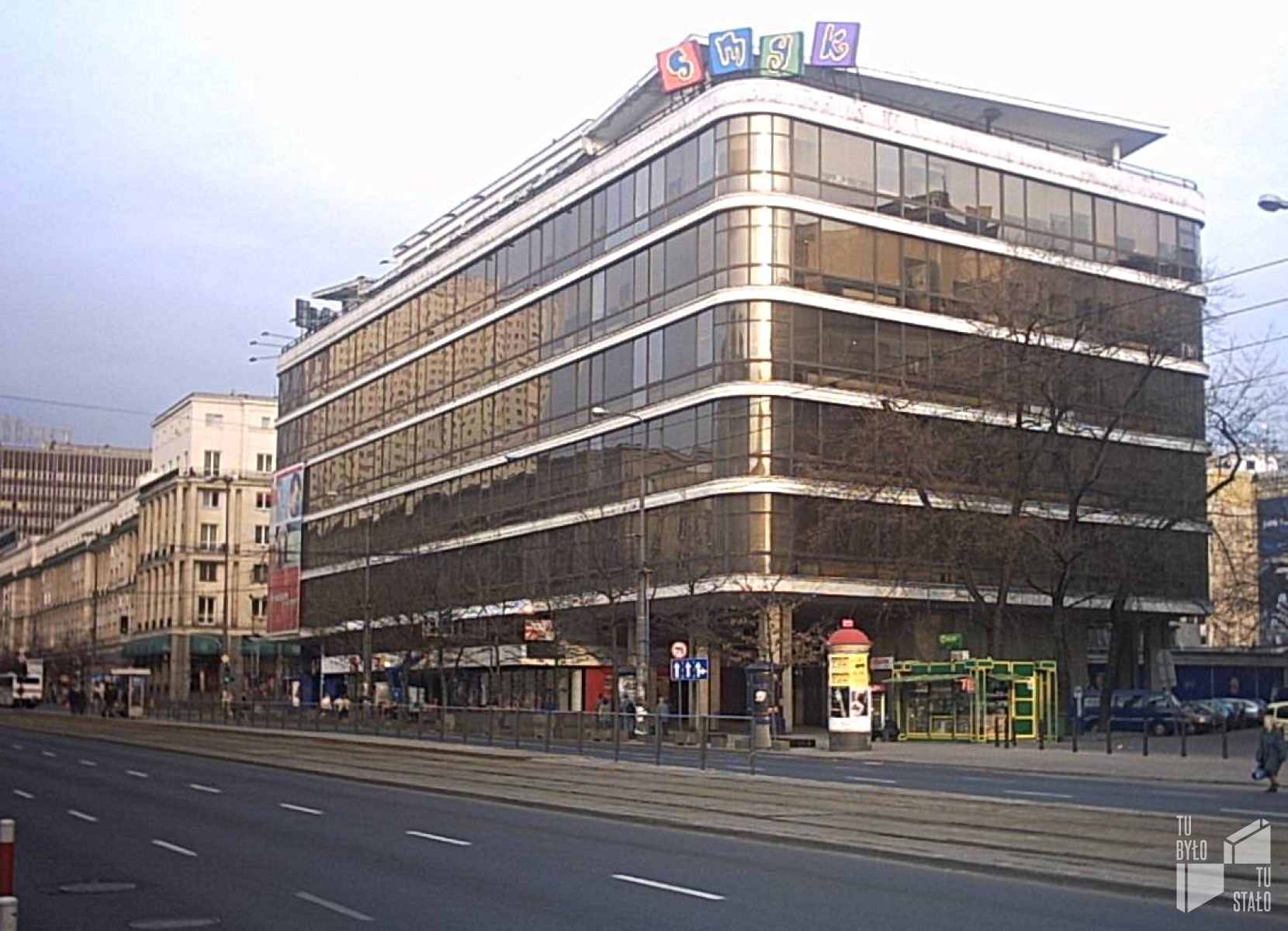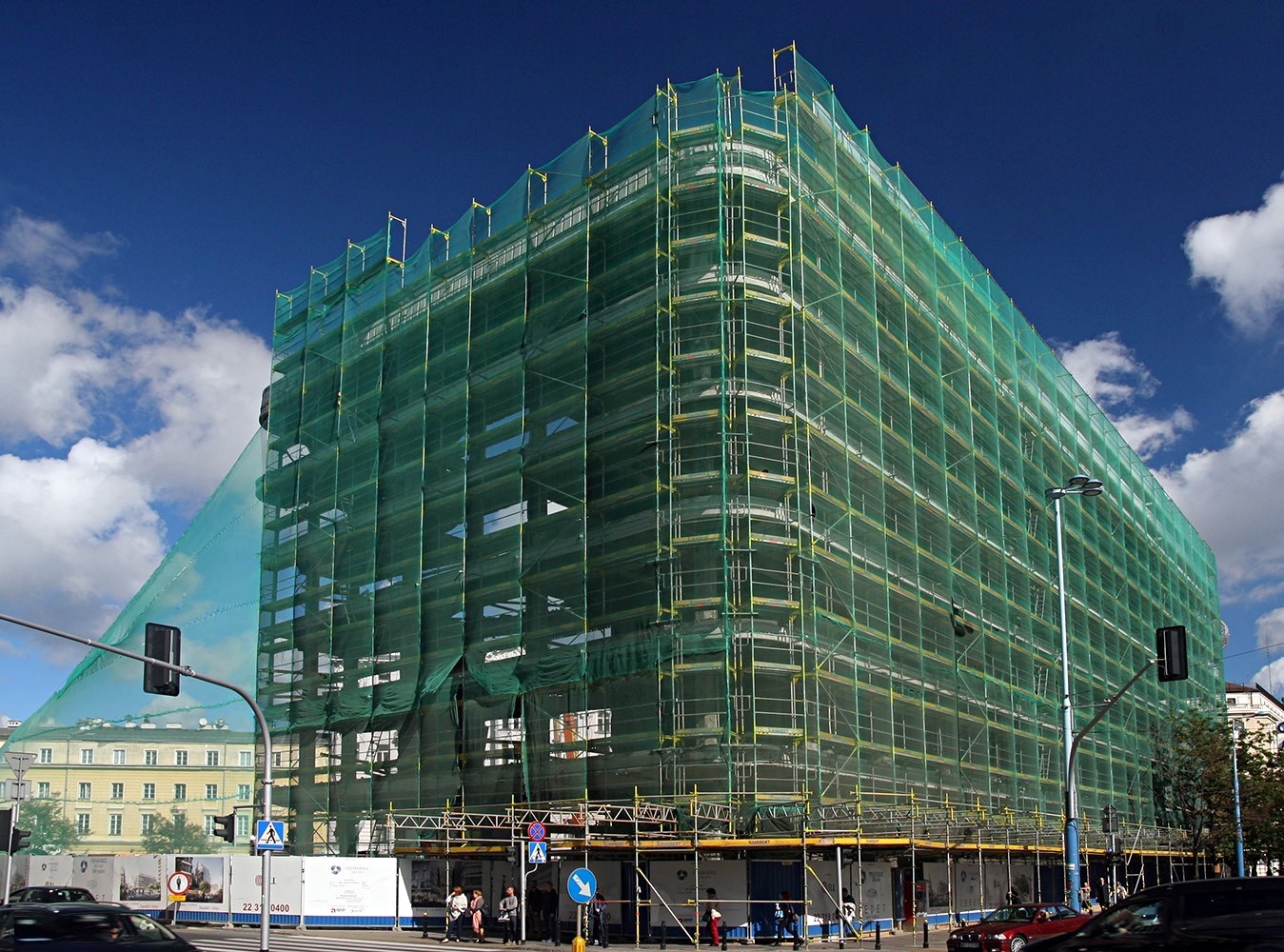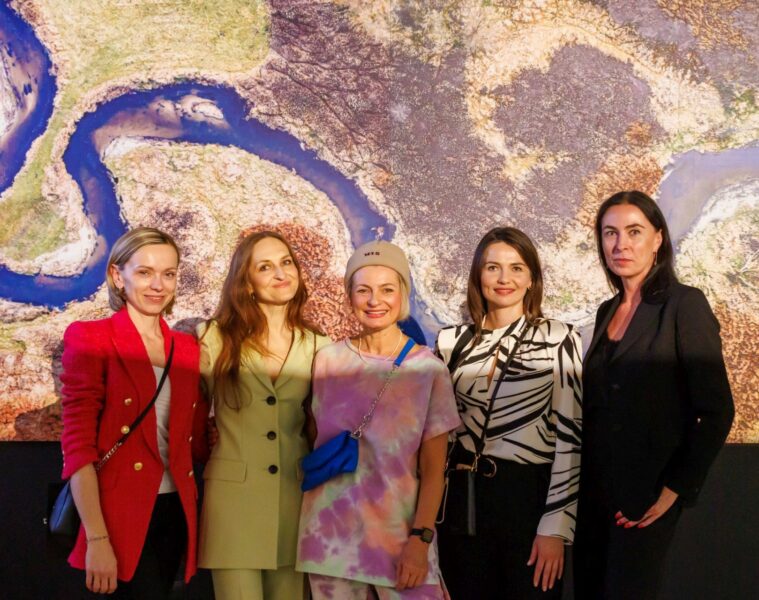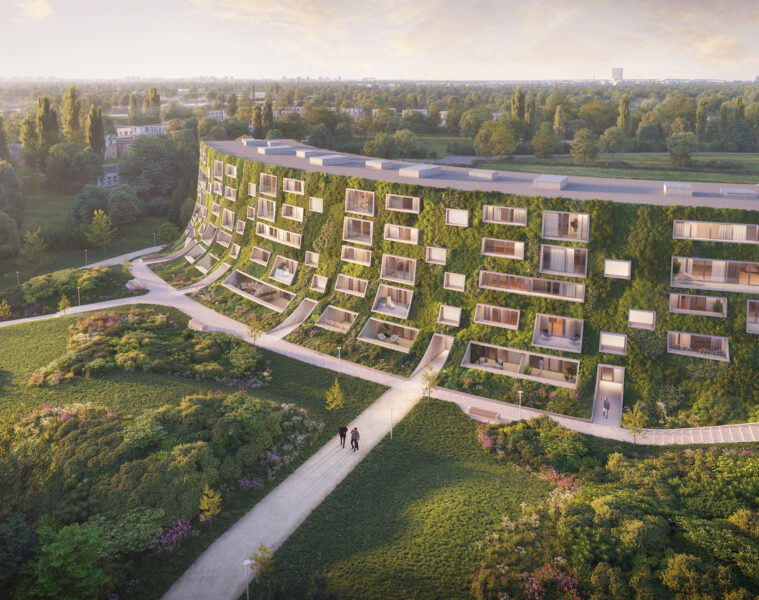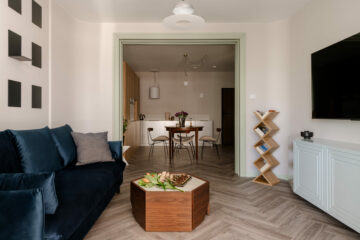CeDeT was the first Central Department Store to be built in the capital after the war. It was put into use on 22 July 1952. At the time, against the backdrop of Warsaw, which was still partly in ruins and being rebuilt with great effort, it was one of its most modern buildings and a symbol of avant-garde architecture. The end of its glory came with a tragic fire in 1975. Carelessly rebuilt, the department store soon began to need renovation again. It waited for many years, and it was only in 2014 that extensive construction work began. The official opening of the renovated building took place on 16 May 2018. Extended from the north, the historic CeDeT is once again a shining gem of Warsaw’s Downtown.
The Central Department Store was designed by Zbigniew Ihnatowicz and Jerzy Romański in 1948 in the style of pre-war functionalism – a year before the proclamation of socialist realism in architecture (which took place in June 1949). The characteristic glazed façade was punctuated by horizontal divisions curving around rounded corners. Another great feature of the building was the deeply undercut and column-supported ground floor, which provided a covered entrance to the building, but also a pedestrian walkway and even a meeting place. On the façade of the building hung a serpentine neon sign designed and made in the then friendly GDR. Along with the glazed commercial building, an office block was also created, set deep into the plot. It was distinguished by its distinctive window design, the staircase concealed by foxgloves and the last storey, which was topped by the same curved roof.
“Jerozolimskie Avenue – Krucza, this is the intersection with the highest pedestrian traffic; the Central Department Store has faithfully served Varsovians and visitors for 16 years.” – the photo (scan) comes from the Warsaw Illustrated Calendar >>Stolica<< 1968
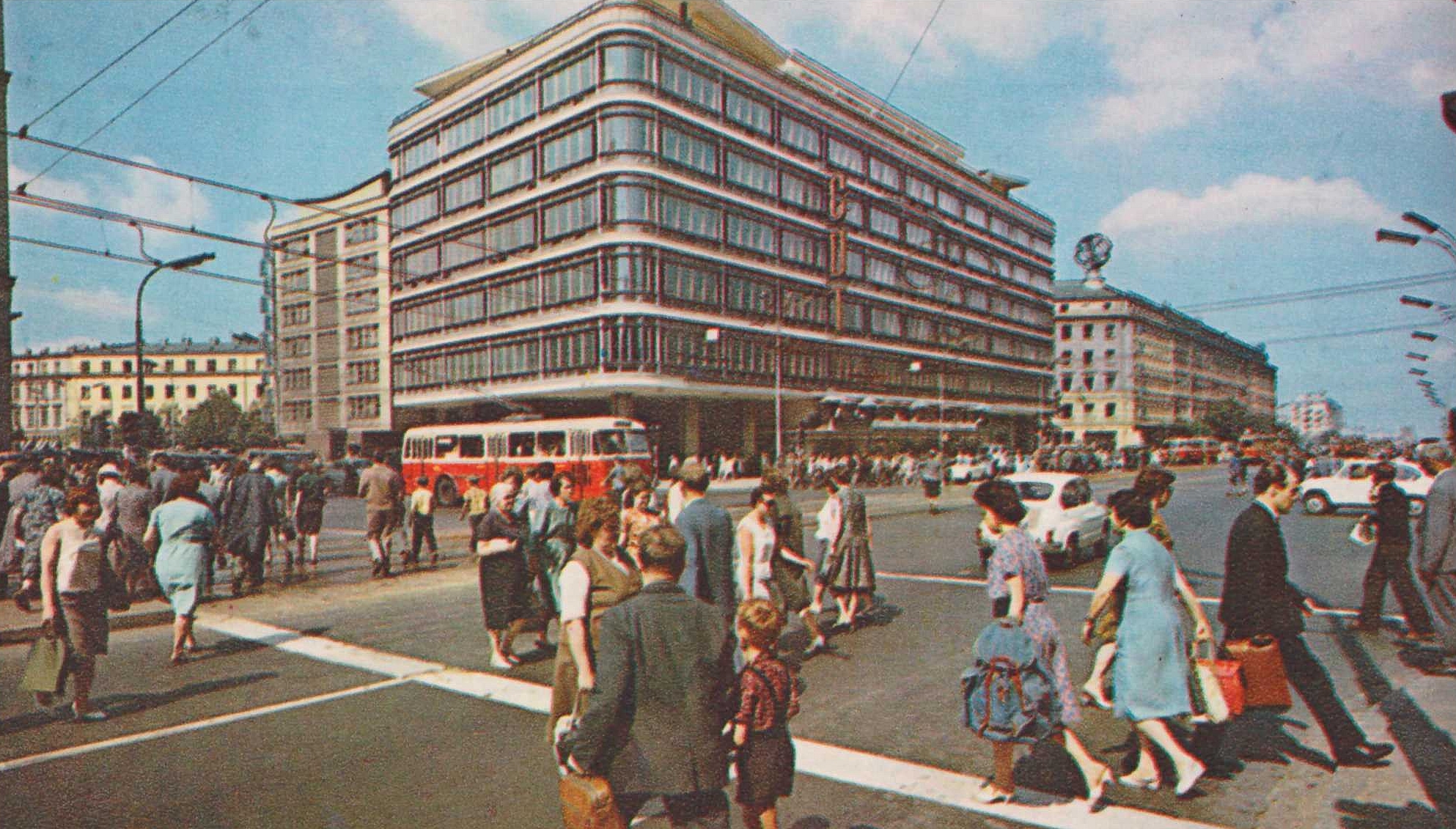
In the pages of the monthly magazine “Architektura”, Zbigniew Ihnatowicz and Jerzy Romański described their idea for a downtown department store as follows:
“The visual concept is based on shaping a strongly overexposed volume cut by horizontal strips of ceilings. An attempt was made to emphasise the commercial character of the building. In shaping the ground floor, the guiding idea was to give smooth and serene pedestrian passages from different directions, so that the crowds of shoppers flow along the exhibitions or through the middle of the department store.”
CeDeT in 1960 and today. Source: http://collections.lib.uwm.edu/, by Harrison Forman and Adrian Grycuk, CC BY-SA 3.0 EN, via Wikimedia Commons
The CeDeT has become a landmark of the capital, being not only a commercial building but also a venue for social gatherings or fashion shows organised on the roof of the building. It was also one of the first buildings in the People’s Republic of Poland to have an underground car park and sunscreens, which have not been used in Poland so far. Another novelty and a unique attraction for Varsovians was the escalator – at the time the second such solution in the capital. We wrote about the first such device HERE. On the mezzanine floor of the building, a popular café overlooking Jerozolimskie Avenue and a delicatessen were opened. The entire CDT complex has been compared to German or Dutch department stores built since the beginning of the 20th century in large cities.
The back of the building just before the redevelopment began and the current view. Photographer: mamik/photopolska.eu, Licence: CC-BY-SA 3.0 and Google Maps
In 1971, the Central Children’s Home, previously located in the Jabłkowske Brothers Department Store, found its place there. Many generations of Varsovians associate the CeDeT with a unique shop where you could get the toys of your dreams. The CeDeT’s years of splendour and prosperity were interrupted by a fire that broke out on 21 September 1975, at around 8 pm, on the sixth floor. The fire spread very quickly to the next three floors. After about two hours, the entire building was already on fire. The entire interior of the building was destroyed. The official cause was considered to be the seizure of escalator bearings that had not been switched off.
So-called Smyk in 2014 and 2018. photo Pko, CC BY-SA 4.0, via Wikimedia Commons and Adrian Grycuk, CC BY-SA 3.0 EN, via Wikimedia Commons
Fortunately, the concrete structure of the CeDeT was not affected in the fire, so that it could be rebuilt. The work was carried out without due respect for the original design, rather carelessly and using low-quality materials. The distinctive neon sign disappeared, the façade was greatly simplified and elegant finishing details were missing. In December 1977, just before Christmas, the SMYK shop opened. The largest shop in the capital with products exclusively for the youngest, it offered a variety of clothes and toys. However, the poor quality of the materials used to rebuild the building caused it to deteriorate rapidly in the following decades. The escalators were mostly out of order – as were the lifts. This meant that fewer and fewer people went shopping in the formerly iconic building on Jerozolimskie Avenue. More service outlets operating in the building were closing down, and with the attractions offered to children by the new shopping centres, SMYK was no longer popular.
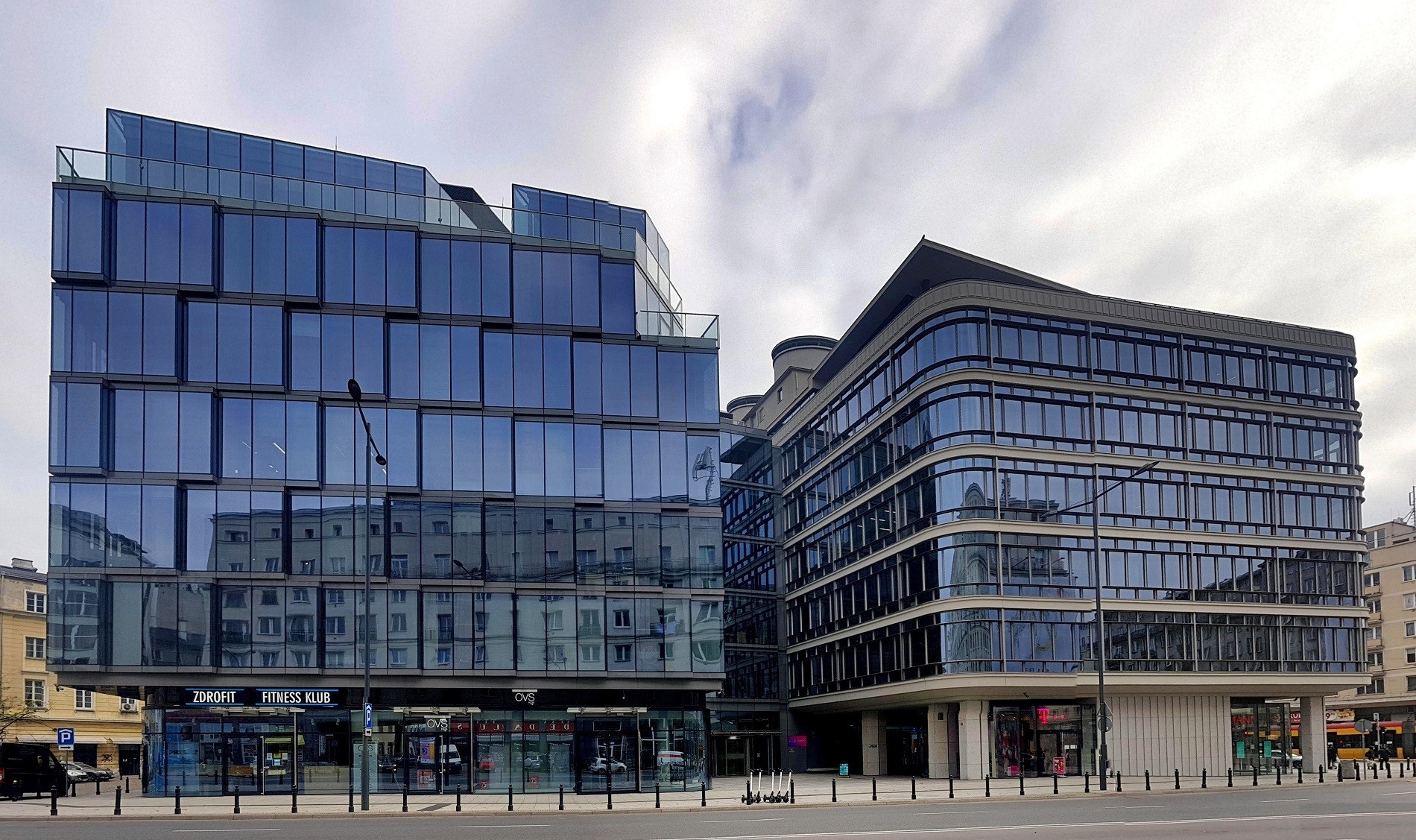
In 2011, the building was sold to Immobel, which began redevelopment three years later. Most of it was demolished, leaving only the reinforced concrete structure located on the side of Jerozolimskie Avenue. Contrary to the fears of Varsovians, it was possible to restore the external splendour of the building, with retail space located on floors -1 to 1 and office space on the upper floors. At the rear of the property, a new office building has been constructed, linked to the historic block. The iconic neon sign also returned to the façade after several decades.
Despite the extensive interference with the historic structure and the associated widespread criticism, Varsovians welcomed the renewed body of the iconic CeDeT with great enthusiasm.
Investor: Immobel Poland
Designers: AMC Andrzej Chołdzyński, RKW Rhode Kellermann Wawrowsky
Sources: culture.pl, morizon.pl
Read also: Architecture in Poland | Modernism | Interesting facts | History | Warsaw

